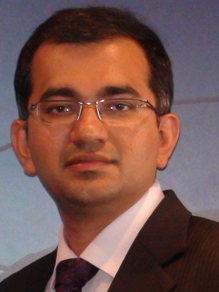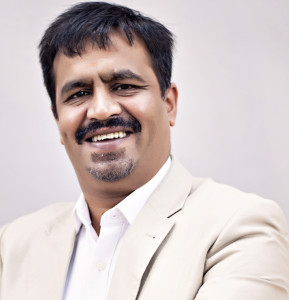
Brands need to bring their focus back to the basics in 2017 and invest more effort in creating mobile ads that better engage consumers.
While still behind other development markets, Asia-Pacific has been increasing adoption of mobile video ads and is the fastest-growing ad format in the past year. This growth is expected to carry through into 2017. Marketers then will need to tap data and robust metrics to better understand user behaviour, so they can push out content to retain customer attention.
ExchangeWire spoke with three executives who highlighted challenges in the mobile ad landscape this year and what advertisers in the region must prioritise to make their campaigns work. The spokespersons are: Rohit Dadwal, Asia-Pacific managing director for Mobile Marketing Association (MMA); Alex Khan, Asia-Pacific managing director at AOL; and Jayesh Easwaramony, InMobi’s vice president and general manager for Asia-Pacific, Middle East, and Africa.
ExchangeWire: Highlight that one development or issue you feel defined the Asia-Pacific mobile ad space in 2016.
Jayesh Easwaramony: Mobile video is eating the world. It has been the game changer of 2016 and is poised to be the future of mobile advertising. Although lagging behind developed markets in terms of adoption by publishers and advertisers, Asia-Pacific has really warmed up to mobile video. It is definitely the fastest-growing ad format and we’ve seen over 200% growth in mobile video ad consumption over the last year alone.

Jayesh Easwaramony, Asia-Pacific VP & GM, InMobi
Rohit Dadwal: Mobile apps have been growing in dominance, fuelled by rising smartphone adoption, increasingly accessible 4G services, and more diverse use cases across industries – from mobile wallets like Android Pay, to entertainment apps like Apple TV, and news apps such as Flipboard and LinkedIn Pulse. Notably, apps have wormed their way into the lives of consumers, to the extent that they now take up 90% of time users spend on mobile.
For one, apps have become a favourable vehicle for m-commerce. Mobile now offers so many payment options and cashless convenience on-the-go, with both retailers and financial institutions working to ensure a secure, yet seamless, payment process for consumers. More specifically, e-commerce sales from mobile apps surpassed mobile websites for the first time in history, according to an October 2016 report by Astound Commerce. At the same time, as consumers continue to covet authentic and intimate conversations, messaging apps also have experienced explosive growth.
This is great news for mobile marketers, who now have a plethora of opportunities at their disposal – new users to target, new avenues to reach them, new ways to personalise content, and new innovations to leverage.
What challenges do you foresee in the mobile ad space this year?
Dadwal: It is no longer just consumer engagement mobile marketers have to worry about; mobile security is now an additional hurdle they must overcome in the coming year. Hacking, data breaches and mobile malware have been plaguing consumers and brands alike, leading to huge sums of revenue loss. Tasked with the huge responsibility of protecting consumer data, brands should look into security measures to avoid damage to reputation, loss in revenue, and damage to consumer loyalty. For this reason, marketers have to work closely with developers and understand the security measures involved while devising their mobile campaigns.
In addition, insufficient metrics are likely to continue to pose a problem for mobile marketers next year, stressing the need for the adoption of more accurate, accountable, and transparent ways to measure performance. Marketers have named measurement in the mobile ad space as one of the biggest challenges, according to a study we did with Warc. As various platforms have different measurement currencies, it is difficult to standardise metrics across platforms. Also, most Asia-Pacific marketers still use single-vector performance metrics rather than more rigid business metrics that display clearer ROI (returns on investment). This perpetuates a gap between what marketers are delivering and what brands are demanding. One way to plug this gap is to align metrics with business objectives and leverage audience analytics and data insights.
Alex Khan: The ‘phone’ element of smartphones is becoming less important. These devices are now an entertainment screen, an image sensor, and a wallet – to name a few. Looking at these unique capabilities of mobile, some of the more exciting areas of opportunity we see come from the emergence of new ad formats, in particular, 360, virtual reality (VR) and augmented reality (AR), and live video, which will all become ubiquitous as we enter an era of 5G. All these developments will enable marketers to reach mobile users in more diversified, sophisticated, and holistic ways.

Rohit Dadwal, MD, MMA Asia-Pacific
Easwaramony: While everyone knows that mobile marketing is key, execution has been very piecemeal and there is less focus on the outcomes. 2017 will be truly be the year of flight to quality, viewability, and sustained performance outside the duopoly of Google and Facebook.
We believe a lot of smaller and local networks will feel the brunt next year as marketers become savvier and agencies work with fewer partners. Another challenge is in mitigating ad fraud and misrepresentation of metrics. By partnering with networks that have proven anti-fraud measures, as well as strong third-party measurement and attribution partnerships and certifications, marketers can ensure they get the best and most accurate returns on their spend.
How should mobile programmatic be improved to drive adoption in Asia-Pacific this year?
Easwaramony: Programmatic today in Asia-Pacific is too obsessed with cheap media buying of banners on mobile web, since the technical tools are not mobile-first capable. Successful programmatic strategies on mobile need a mobile-first mindset and a lot of education around in-app environments and scalable audience buying. We need to focus on returns on learning rather than pure efficiency and utilise the full arsenal of why mobile marketing works. For example, location signals provide strong contextual triggers that can be leveraged to drive improved engagement and conversion, certain ad formats do better than others, and so on.
Khan: The key is going to be greater use of insights to drive more accurate targeting and execution. The need to ensure you are reaching the right audience is even more vital in mobile than it is on desktops because consumers see misplaced ads as an intrusion. The industry needs to improve targeting, not just to drive efficiencies in their own campaigns, but also to ensure we don’t drive more people to use ad-blocking technology.
Dadwal: We need to first look at how the programmatic ecosystem can be improved, on a whole. The industry needs to take ownership and pursue a holistic approach, from education and standardisation of metrics, to setting and managing expectations, as well as building creative and planning capabilities to fill gaps in data quality. First, appropriate standardisation of metrics needs to be established in light of new, diverse metrics that have become openly available. Second, the capabilities gap within the region’s talent pool must be addressed to push mobile programmatic to the next level. Marketers need to seize the opportunity to invest in programmatic and use the technology with an ‘always-on’ strategy. More than just an ad-hoc method of purchasing inventory, the conversation needs to move towards leveraging the full range of possibilities enabled by programmatic.
Finally, with a culture of risk aversion in this region, there needs to be greater education and clearer illustration around how programmatic works to fulfil a brand’s objectives. This has to be supported by continued innovation in data quality on mobile, especially in emerging markets like Indonesia and the Philippines, where marketers tend to rely on digital platform giants, such as Google and Facebook, to manage the process.
Identify three priorities Asia-Pacific marketers need to focus on for 2017 to ensure their mobile campaigns are successful.
Khan: These, I think, can be summarised as one area of focus: improving customer experience. We need to ensure, collectively, that we deliver ads that are effective without being intrusive. If I were to break that down into three separate priorities, I’d say, first, better targeting. Misplaced ads annoy users, particularly on mobile, and that doesn’t do the industry any favours.
Second, there needs to be clearer understanding of behaviour. There’s so much information available on how users interact with the ads we place, it’s a crime not to use it. We should be looking for signs of what works and what’s turning people away. Perhaps we, as an industry, need to start sharing our learnings, particularly as it relates to users who disengage with mobile advertising.
Third, we need seamless creative that invites rather than detracts. Ads that take over screens can be an annoyance, doubly so if the content isn’t relevant to the user. Expandable banner ads are examples of how we can make screen real estate available for those who choose it, whilst reaching a wider audience. Just as we’re using data for targeting, we should be applying the same sort of learnings on creative executions.

Alex Khan, Asia-Pacific MD, AOL
Dadwal: Behind every successful mobile campaign is a successful strategy – one that is robust, long-term, and has well-defined and measurable objectives. With the mobile landscape evolving this rapidly and dynamically, continual reassessment of strategy will go a long way in helping marketers stay ahead of the curve. Yet, while many marketers have invested in mobile, this investment is not always supported by a clear strategy and ROI. This is why marketers would benefit from aligning strategy with marketing activities across platforms and by thoroughly understanding consumer behaviour.
Another key priority is to enhance the user experience on mobile. More and more users are pushing back on mobile ads, with almost 300 million people actively using ad-blocking on mobile browsers. The opportunity, therefore, is to make the mobile experience friendlier and to do so by delivering content that is relevant, engaging and, of course, drives a meaningful outcome for the user. To better achieve this, marketers need to take a hard look at consumer sentiment through the mining of consumer data and feedback and address key issues. Some ways of working around this include adopting less intrusive ways to target consumers, for instance, using different ad formats and contextual messaging as well as native ads.
Content needs to be made a priority. Looking at engagement patterns, content remains one of the most crucial components to sustain effective mobile campaigns and retain consumers. While the number of app downloads is set to grow next year, marketers have to keep in mind that only half the battle is won when the user downloads an app. The key is ensuring the app continues to provide value to consumers and when consumers’ needs change, so should the app. Investing in targeted, relevant, and useful content that reaches the right users at the right moments is something marketers ought to prioritise for 2017.
Easwaramony: Video is the fastest growing ad format and so marketers should really improve investment and focus on mobile video. To ensure maximum engagement and conversion, marketers also need to stop looking at mobile as a standalone channel and make it an integral part of the marketing mix. This shift will require marketers to stop adapting desktop creatives to mobile and start thinking mobile-first, so they fully leverage the data-driven and immersive nature of mobile creatives. Finally, strive to understand mobile better. It’s a journey and one that requires constant investment.
No comments:
Post a Comment